Gamboa neighbourhood: one of the best walks in Salvador
The Gamboa neighbourhood of Salvador is a seaside community, inhabited for centuries by fishermen, located at the southwestern entrance of Todos os Santos Bay, close to the historic centre of the city.
Gamboa – home to the parishes of Solar do Unhão, Gamboa de Cima and Gamboa de Baixo – is bordered by Avenida Contorno and surrounded by the immensity of Todos os Santos Bay. No, that’s no exaggeration.
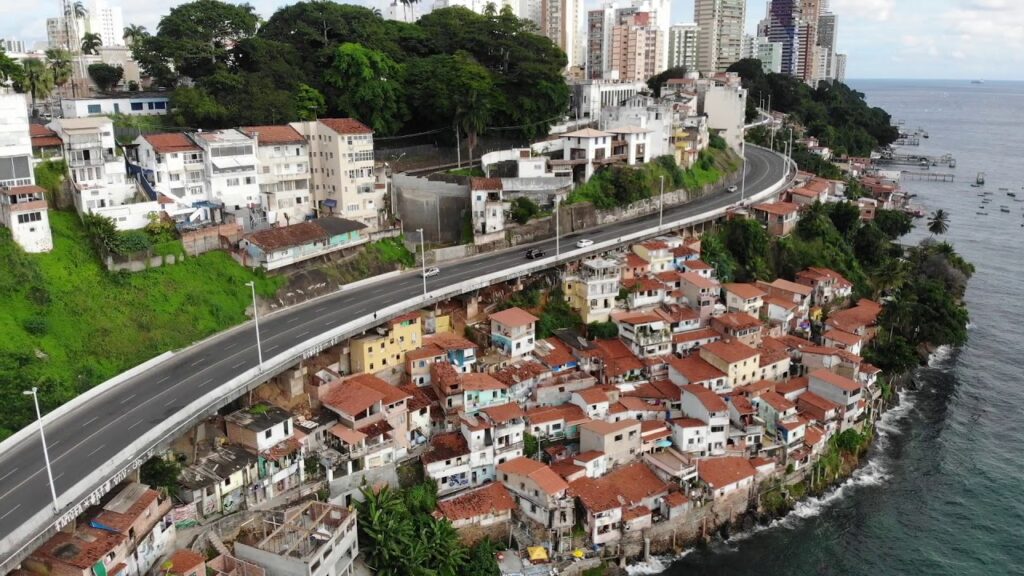
A neighbourhood with a privileged view
The residents of these neighbourhoods have the serenity of the sea as their permanent view. For the Post Office and Google Maps, these places belong to the Dois de Julho neighbourhood, but for the residents and regulars, this piece of land is a city in its own right.
Start of the tour: Solar do Unhão
The tour should start at the Solar do Unhão, which houses the Bahia Museum of Modern Art (MAM).
In addition to the MAM Beach (practically inside the Sculpture Park), the area hosts the Jam no MAM project during the summer, which promotes jazz concerts at sunset.
Urban art in the community
You can also enjoy the graffiti of MUSAS – Salvador’s Museum of Street Art – that decorates the walls and facades of the municipality.
Flavours of Gamboa
In the Solar do Unhão parish you’ll find the popular Dona Suzana restaurant, famous for its classic ray moqueca (and lots of love to give and sell).
In Gamboa you’ll also find the Bar de Mônica, which, as well as good food, has a pier with endless views of Todos os Santos Bay.
Sports and nature
The whole area is an invitation to practise water sports, such as Stand Up Paddle (SUP), especially from the “Pedrinhas Beach”, as the Solar Beach is known.
History of Gamboa
Gamboa was part of Salvador’s first habitable area, due to its proximity to the Old Port, located in the Comércio area.
In 1962, the construction of Avenida Lafayete Coutinho (or Avenida do Contorno) defined the boundaries of the neighbourhood between Gamboa de Baixo and Gamboa de Cima. Both are adjacent to the traditional Dois de Julho neighbourhood.
Historical heritage
The remains of Fort São Paulo make up the landscape of Gamboa de Baixo. Inaugurated in 1722, the fort was part of the city’s defence plan. Now in ruins, the site is used by the community for meetings and cultural activities.
Video about the monuments of the Gamboa neighbourhood.
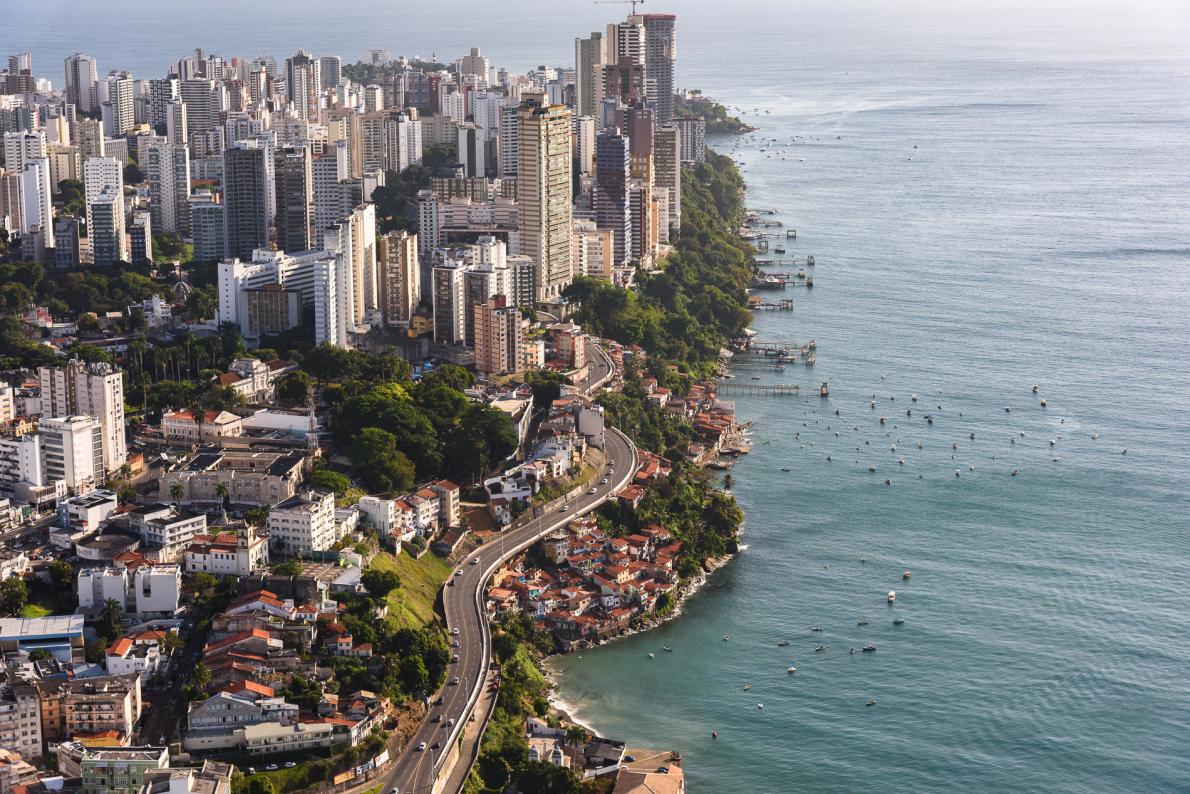

Avenida Contorno em Salvador BA03:20

Comunidade do Solar do Unhão em Salvador25:49

Museu de Arte Moderna da Bahia - MAM02:55

Praia do MAM em Salvador BA01:55
Places of interest in the Gamboa neighbourhood
1. Culture.
Just off the Avenida Carlos Gomes, next to the Largo dos Aflitos, is one of Salvador’s most important cultural venues: the Gamboa Theatre. Although small – with only 80 seats – the theatre hosts shows and exhibitions of great importance to the city’s artistic scene.
Nearby is Salvador’s Passeio Público, home to the traditional Vila Velha Theatre and the magnificent Palácio da Acclamação, seat of the state government.
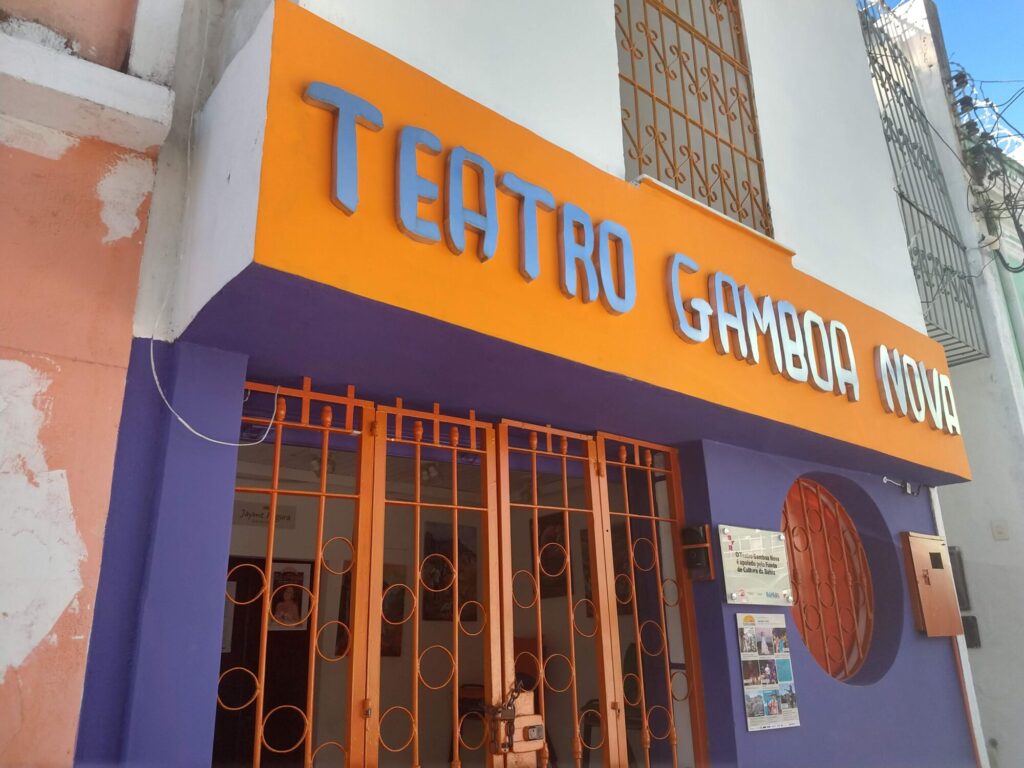
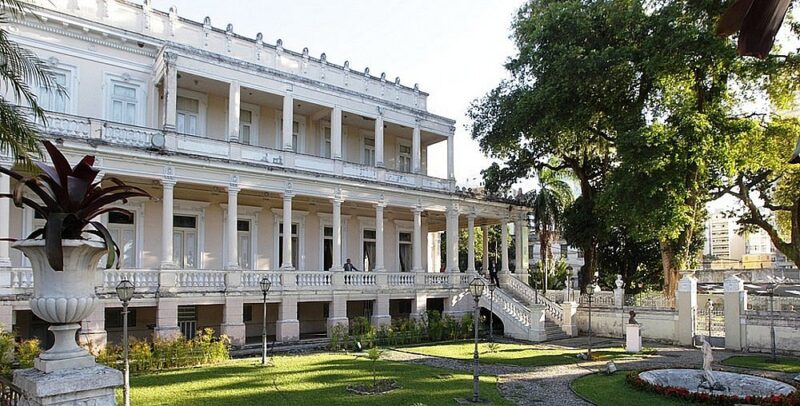
The Passeio Público offers a privileged view over the Gamboa neighbourhood and the beautiful Bay of All Saints.
Prainha da Gamboa de Baixo, also known as Praia do Solar do Unhão by the locals, is a must for anyone visiting Salvador. With its calm waters and photogenic scenery, it’s ideal for a relaxing swim and some great memories.
Next door, practically inside the MAM Sculpture Park, is the charming Prainha do MAM. This small bay, located between the Bahia Museum of Modern Art and the Bahia Marina, has calm, crystal-clear waters and is the new hotspot for young people in Salvador.
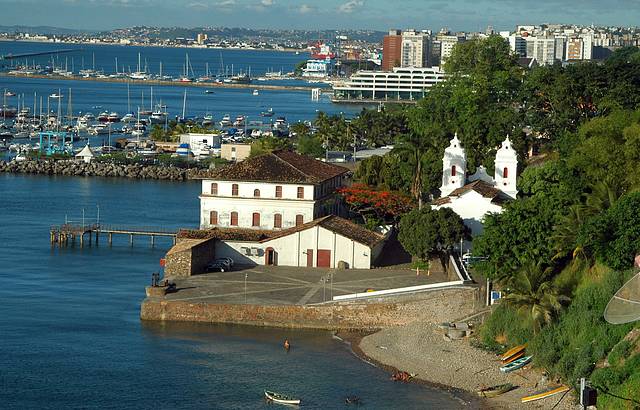
This place has become a sensation among locals, tourists and young hipsters, making it one of the liveliest places in the city. After all, where else can you find a beach in a museum? Things unique to Salvador!
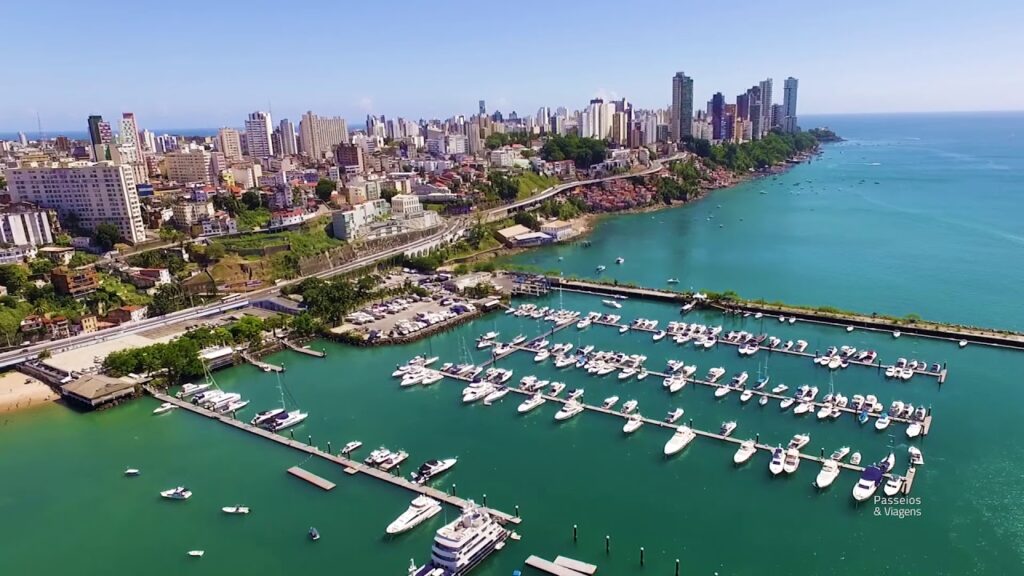
2 Cuisine
Gamboa has gastronomic treasures to suit all tastes and styles. At the top of the neighbourhood, on Rua Gamboa de Cima, you will find Restaurante Chez Bernard, Salvador’s first French restaurant, founded in 1963 by Monsieur Bernard Goethals. It is a reference in international cuisine.
But it’s the regional food that really stands out, especially the seafood. Two places stand out:
- Bar de Mônica – famous for its good food and stunning views over Todos os Santos Bay.
- Dona Suzana Restaurant – famous for its moquecas and featured in the Netflix series Street Food, where Dona Suzana shares her passion for Bahian cuisine.
Another place not to be missed is Bar A Novidade, which opened in the summer of 2019 and has won over the public with its colourful buoys, grilled fish and a relaxed space with chairs on the slab facing the sea. The bar is run by two members of MUSAS (Salvador’s Street Art Museum).
3. Gamboa on screen and in music
The area has become a celebrity favourite for recording. Gamboa Beach was the setting for the Anitta singer’s Bola Rebola music video, and also featured in the TV Globo soap opera Segundo Sol.
Netflix filmed an episode of its Street Food series there, exploring the flavours and stories of the local cuisine.
Singer Ivete Sangalo, a neighbour of the community, is also a constant presence in the area, where she often practises stand-up paddle (SUP) with her husband, Daniel Cady. In fact, they met and started dating right by the sea in Gamboa!
Gamboa de Baixo and Solar do Unhão are bustling with cultural and commercial activity. Visit the Residents’ Association to find out more about local events and initiatives.
4. The beaches of Gamboa, MAM and Solar do Unhão: What they look like and how to get there
4.1 MAM Beach
A small strip of sand between the rocks of Bahia Marina and Bahia Museum of Modern Art. Access is through the museum itself.
On the beach you can rent chairs and umbrellas, and there are also vendors selling beer, cheese curds and ice-creams.
You can also get there by boat from Praia do Solar do Unhão, known locally as Areinha.
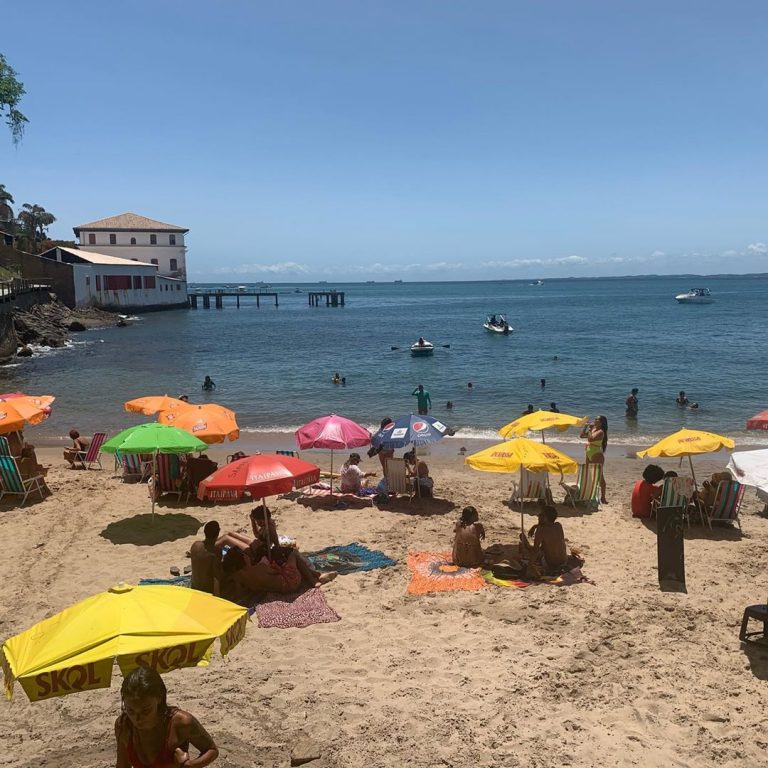
4.2 Solar do Unhão beach
This is a stony beach, a characteristic that makes it quite unusual.
The strip of rocks is a little longer than the one at MAM. The stones are round, so you can walk comfortably in sandals. Going into the sea barefoot can be an adventure, especially on the way out.
The small beach is perfect for enjoying the sunset and watching the movement around the Solar do Unhão.
To get there, simply enter the parish, pass under the Avenida Contorno and take a staircase on the right, in front of the Association of Residents.
From there you can take boats to Praia do MAM, Gamboa, Corredor da Vitória, Baía, Barra, among others.
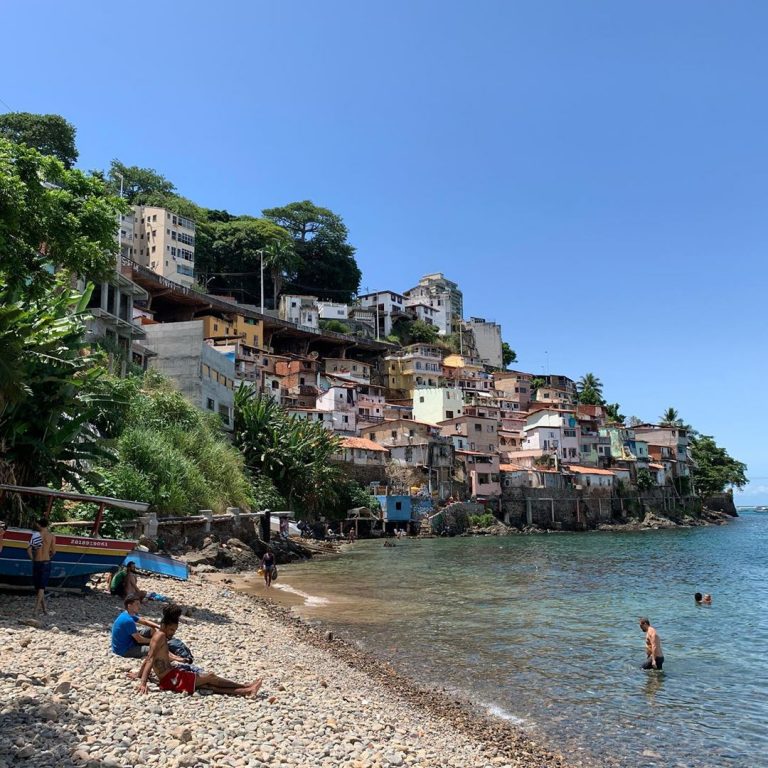
4.3 Gamboa Beach
This is practically the entire stretch of sea in Todos os Santos Bay that bathes the region.
There isn’t always a strip of sand – in many places there are rocks. There are stretches with a small strip of sand between the old Forte São Paulo da Gamboa and the Bar da Mônica.

Publicações Relacionadas
Fort of Nossa Senhora de Monte Serrat History
Fort of Santo Antônio da Barra and Its Rich History
Learn about the history of the construction of the Lacerda Lift
Convent and Church of Santa Teresa and its History
History of the São Marcelo Fort or Forte do Mar in Salvador
Journey into the Sacred Art of Catedral Basílica de Salvador
Exploring the Architectural Marvels: Churches of Salvador
History of the Forts and Lighthouses of Salvador
History and sights of Avenida Contorno in Salvador BA
Discovering the Origins of the Senhor do Bonfim Ribbons
Characteristics and History of the Church and Convent of São Francisco in Salvador
Tourist Attractions in Pelourinho and the Historic Centre of Salvador
Prostitution, Sex, Bars and Nightclubs in Salvador de Bahia
Solar do Unhão and the Museum of Modern Art in Salvador BA
Secret History of Salvador de Bahia
History of the Founding of Salvador de Bahia
Rio Vermelho Neighbourhood in Salvador's Nightlife
Basílica de Nossa Senhora da Conceição da Praia: História
This post is also on:
![]() Português
Português ![]() English
English ![]() Deutsch
Deutsch ![]() Español
Español ![]() Français
Français



















